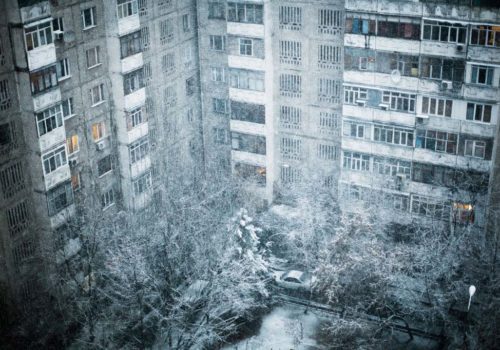I remember becoming conscious of Kyrgyzstan for the first time when in march 2005 I watched on TV Asiatic looking men surging toward an imposing soviet-style administrative building. Once inside the building they started to vandalise and loot anything they found and soon after a few men appeared on the roof of the building, brandishing a flag.
This event became known as the “tulip revolution” and the press reported that the Kyrgyz people, motivated by social injustice, had overthrown the authoritarian and corrupt regime of president <strongsAskar Akayev and replaced him with Kurmanbek Bakiyev.
It was a few years later, with the country removed from the limelight and forgotten, that I visited Kyrgyzstan for the first time. I set out to discover what the tulip “revolution”, which was supposed to have lead to a “democratic transition in the country”, had really accomplished.
This so-called revolution seemed to have been no more than a power grab. The elections were still rigged, some media were censured, political opponents were being arrested and Kyrgyzstan was considered one of the 15 most corrupt countries in the world. Even today, 40% of the population live below the poverty line and many look back to the soviet era with nostalgia. Today people speaks of the tulip revolution as a coup d’etat disguised as a popular revolution.
I continued to visit the country over the course of several years. I was struck by the growing instability there which eventually lead to the bloody riots of April 2010. This was a new revolution, perhaps a little more authentic this time. The nepotistic Bakiyev was overthrown in his turn and found refuge in Belarus, as Akayev had five years earlier. There followed a period of great unrest during which Osh, the major city in the south, was the scene of ethnic clashes. Officially, around 500 people were killed. In truth, the numbers are probably much higher. 400 000 people, mainly ethnic Uzbeks, were displaced from their homes.
Some say the young country never really recovered from the USSR collapse in 1991 and that what it experiences now is the painfull learning of independance.
William Daniels
Biography
William is a 35 years old French photographer .
His work revolves around social issues and humanitarian concerns mostly focusing on isolated or weakened communities.
With the help of the grant Defi Jeune , he began his carrier by photographing the story Manila ‘s little ghosts documenting the life of street children in the Philippines.
In 2005, he was commissioned by the Museum of Natural History in Lyon to photograph the Madagascan community and carry out an exhibition.
In 2007, he won the Lagardere Foundation grant to shoot the long term feature Faded Tulips, a journey through Kyrgyzstan’s fragile post soviet democracy the book was recently published by Emphas.is.
His long-term work on malaria, shot in 7 countries, was exhibited on the Pont des Arts Bridge in Paris in 2008, in London in 2009 and in Brussels European parliament in 2011 and is now published in the book Mauvais air (Images en manoeuvre editions).
He has received international awards the World Press, 3 Picture of the year, and was short listed at Smith Fund and the French Beaux Arts academy award.
He works regularly for the French and international press: Time, The New York Times, Polka magazine, Le Monde, Der Spiegel… and he collaborates with organizations such as Medecins sans frontieres, Medecins du Monde, ICRC, Handicap International, The Global Fund and several UN agencies (UNFPA, UNWFP)
He is represented by the London based Panos picture agency: www.panos.co.uk and by Polka Gallery in Paris
William Daniels – Faded Tulip
Galerie FAIT & CAUSE
From Wednesday 19 September through Saturday 27 October 2012
58 rue Quincampoix
75004 Paris – France
















